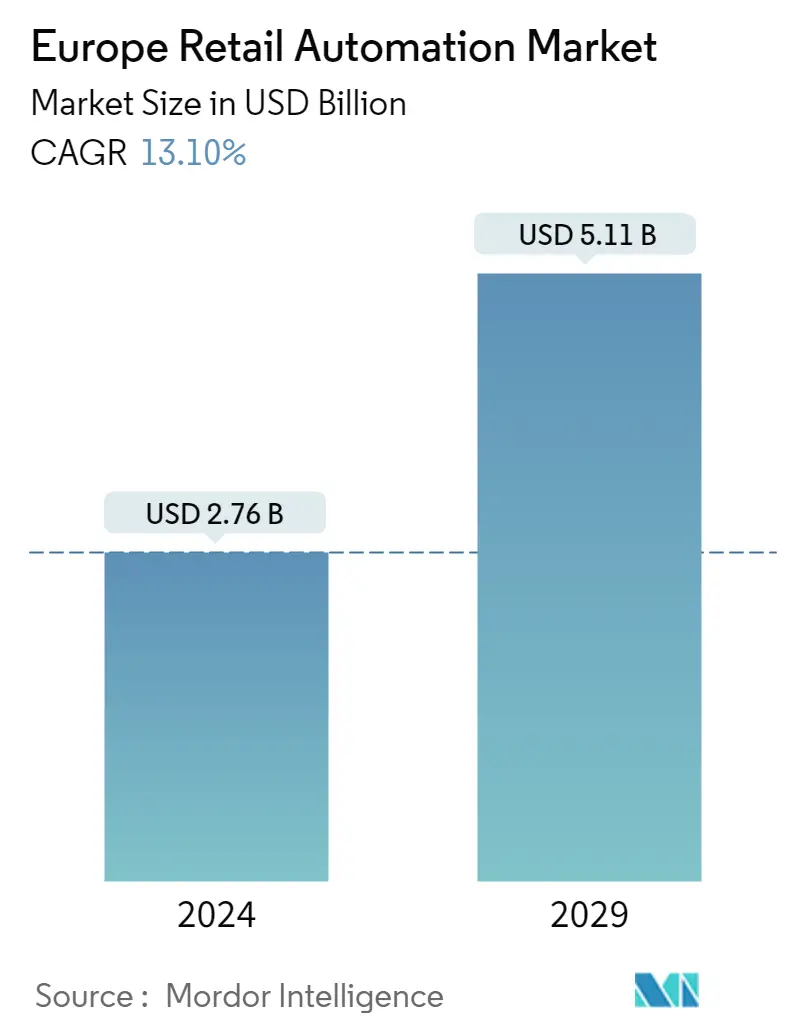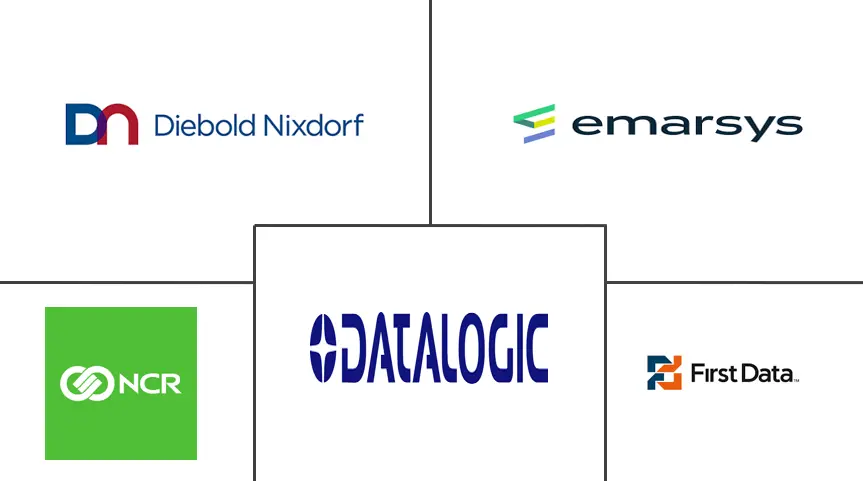Market Size of Europe Retail Automation Industry

| Study Period | 2019 - 2029 |
| Base Year For Estimation | 2023 |
| Market Size (2024) | USD 2.76 Billion |
| Market Size (2029) | USD 5.11 Billion |
| CAGR (2024 - 2029) | 13.10 % |
| Market Concentration | Medium |
Major Players
*Disclaimer: Major Players sorted in no particular order |
Need a report that reflects how COVID-19 has impacted this market and its growth?
Europe Retail Automation Market Analysis
The Europe Retail Automation Market size is estimated at USD 2.76 billion in 2024, and is expected to reach USD 5.11 billion by 2029, growing at a CAGR of 13.10% during the forecast period (2024-2029).
- Due to rising inflation, consumers adjusted by spending less, turning to recommerce, and adapting to substitutes. According to Insee, Monthly household expenditure on consumer goods in France decreased from 48.9 thousand USD in January 2021 to 44.9 thousand USD in January 2022. The retailers recognized the need for automation after observing the increase in footfall.
- The European Union has established a forward-looking goal for AI. By 2030, 75% of European businesses will reportedly use AI. The framework puts a lot of emphasis on introducing various cross-border projects, combining EU funding with national governments and private investors. Cloud computing, big data, and AI will be utilized by three out of every four businesses by 2030. The proportion of unicorns in the European Union should treble, and more than 90% of SMEs should achieve at least a basic level of digital intensity.
- March 2022 - To improve its logistics and inventory infrastructure, MQ Marqet, a Swedish fashion retailer, adopted AutoStore, an automated goods-to-person developed by DB Schenker. The system uses warehouse robots to deliver and retrieve bins for operators. The application also takes care of e-commerce and store-replenishment operations.
- During the early stages of the COVID-19 pandemic, when there was a labor shortage, delivery slots were few, and customer demand was high, demand for click-and-collect models surged. These models assisted grocery stores in reaching customers outside urban areas, including suburbs, small communities, and even rural locations. Ocado developed grocery-picking robots that will enable cheaper, quicker deliveries and help with labor shortages.

